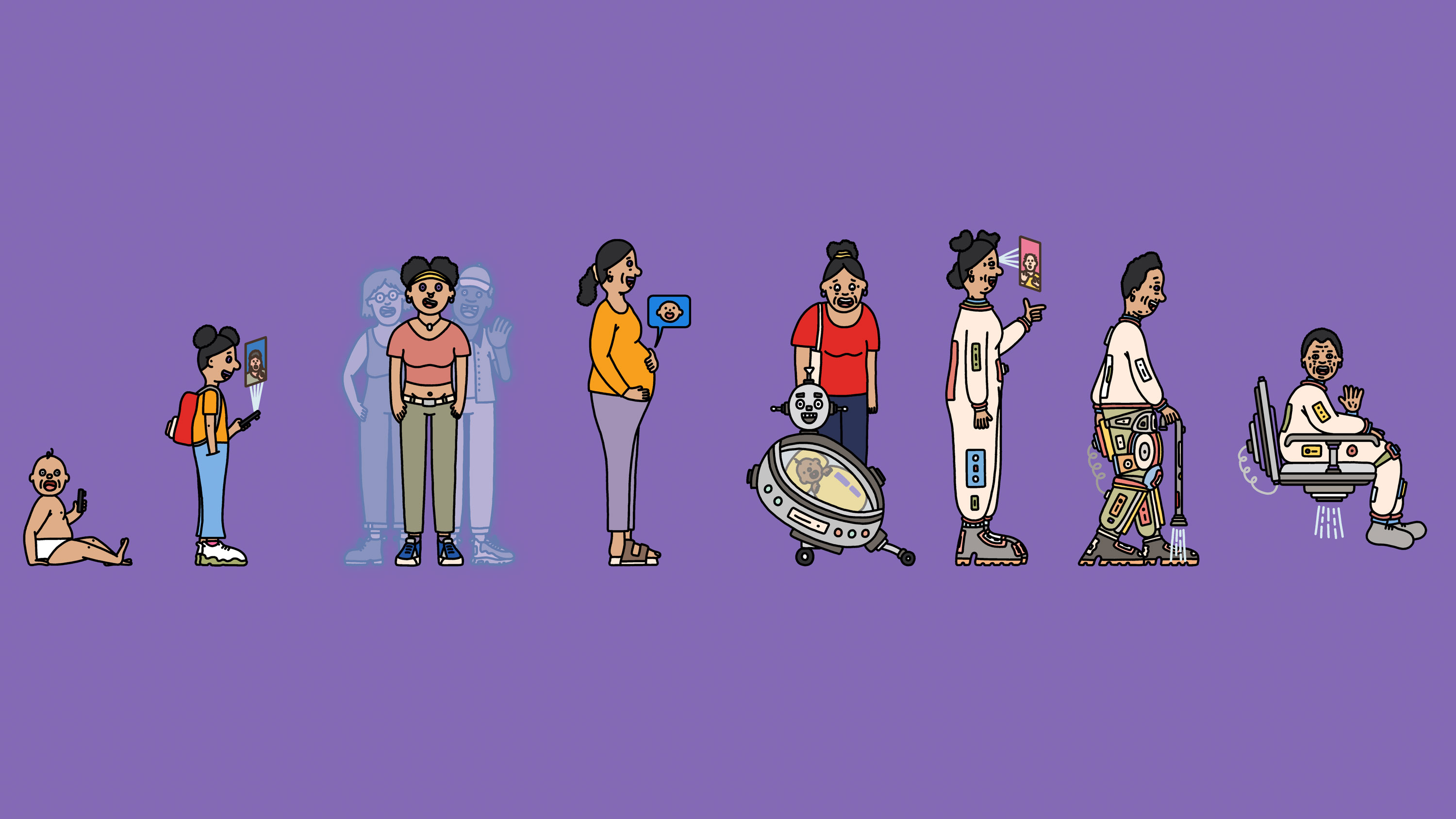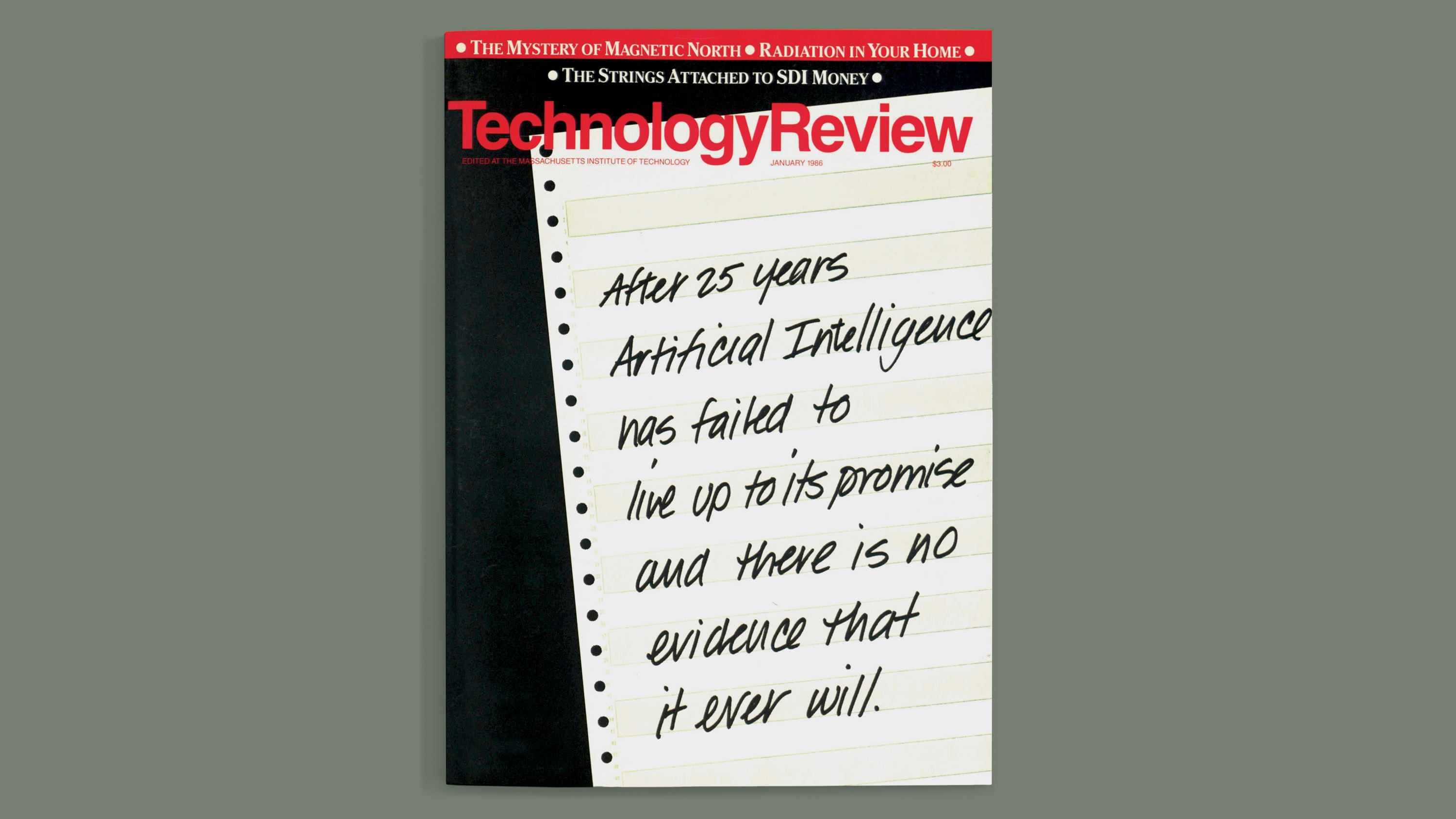5 things we didn’t put on our 2024 list of 10 Breakthrough Technologies
Every year, we publish a new list of technologies we think matter most right now. Here’s what didn’t make the cut.

No one can predict the future, but here at MIT Technology Review we spend much of our time thinking about what it might hold. One thing we know is that it’s especially hard to make predictions about technology. Most emerging technologies fizzle or flame out. Some start out as consumer devices but wind up finding their niche in more specialized applications. Only a few become household names.
Each year, we put together a list of 10 Breakthrough Technologies, picking the advances that we think have the greatest potential to change our lives (for better or worse). We’ve done this for more than 20 years, and next month we’ll reveal our picks for the 2024 list.
We haven’t always been right (RIP, Baxter), but we’ve often been early to spot important areas of progress (we put natural-language processing on our very first list in 2001; today this technology underpins large language models and generative AI tools like ChatGPT).
Every year, our reporters and editors nominate technologies that they think deserve a spot, and we spend weeks debating which ones should make the cut. Here are some of the technologies we didn’t pick this time—and why we’ve left them off, for now.
New drugs for Alzheimer’s disease
Alzmeiher’s patients have long lacked treatment options. Several new drugs have now been proved to slow cognitive decline, albeit modestly, by clearing out harmful plaques in the brain. In July, the FDA approved Leqembi by Eisai and Biogen, and Eli Lilly’s donanemab could soon be next. But the drugs come with serious side effects, including brain swelling and bleeding, which can be fatal in some cases. Plus, they’re hard to administer—patients receive doses via an IV and must receive regular MRIs to check for brain swelling. These drawbacks gave us pause.
Sustainable aviation fuel
Alternative jet fuels made from cooking oil, leftover animal fats, or agricultural waste could reduce emissions from flying. They have been in development for years, and scientists are making steady progress, with several recent demonstration flights. But production and use will need to ramp up significantly for these fuels to make a meaningful climate impact. While they do look promising, there wasn’t a key moment or “breakthrough” that merited a spot for sustainable aviation fuels on this year’s list.
Solar geoengineering
One way to counteract global warming could be to release particles into the stratosphere that reflect the sun’s energy and cool the planet. That idea is highly controversial within the scientific community, but a few researchers and companies have begun exploring whether it’s possible by launching a series of small-scale high-flying tests. One such launch prompted Mexico to ban solar geoengineering experiments earlier this year. It’s not really clear where geoengineering will go from here or whether these early efforts will stall out. Amid that uncertainty, we decided to hold off for now.
Male-male reproduction
In March, scientists announced that they had created healthy mouse pups by taking cells from two male mice and transforming some of those cells into eggs. The proof-of-concept study shows that this technique can enable reproduction between animals of the same sex, and possibly even allow animals to reproduce without a partner. The advance may someday allow same-sex reproduction in other animals, too—perhaps even humans. But testing something in mice is a long way from testing it in people, so we deferred.
Over-the-counter Narcan
In March, the US FDA approved the first over-the-counter use of naloxone nasal spray, which reverses opioid overdoses. The spray is now sold by retailers nationwide, including CVS, Walgreens, and Walmart, where two doses cost about $45. Making this medicine more widely available without a prescription will undoubtedly save lives, given that opioid overdoses kill more than 80,000 Americans a year. But the real advance here, in our view, was a new distribution method rather than a scientific or technological breakthrough.
So what did make our list? Well, you’ll have to come back in January to see. However, we did share one of our 2024 picks in advance with attendees at our recent EmTech MIT event in Cambridge, Massachusetts. Subscribers can watch a video of that special announcement. (Not a subscriber? Get access here.)
Deep Dive
Culture

Happy birthday, baby! What the future holds for those born today
An intelligent digital agent could be a companion for life—and other predictions for the next 125 years.

The race to save our online lives from a digital dark age
We’re making more data than ever. What can—and should—we save for future generations? And will they be able to understand it?
Stay connected
Get the latest updates from
MIT Technology Review
Discover special offers, top stories, upcoming events, and more.

